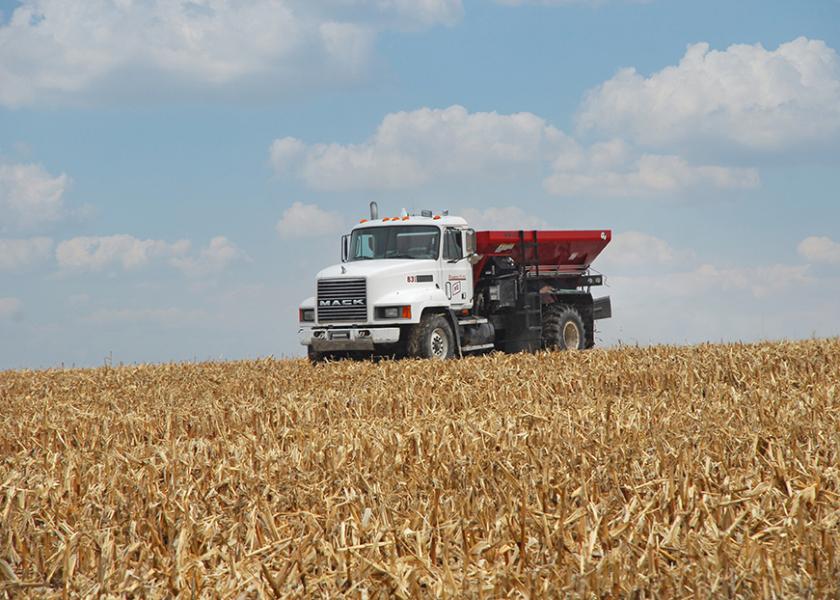How to Balance Agronomic Decisions Against High Fertilizer Costs

Rising costs could lower fertilizer rates in 2022
The high cost of fall fertilizer is likely to have a long tail on U.S. corn production. Issues with natural gas availability globally is stoking concerns about a shortage of nitrogen (N) fertilizer. Plus, fertilizer prices continue to spike in the last few months of the year.
RETURN ON INVESTMENT
Despite higher grain prices, farmers will likely pull back on N applications in 2022, says Gary Schnitkey, agricultural economist at the University of Illinois.
Most decision aids will indicate farmers should drop N rates due to higher fertilizer prices, he says. In mid-November, he ran the “Maximum Return to Nitrogen” tool developed by Midwest land- grant universities for $5 corn.
“At $1,100 anhydrous, we’re looking at 207 lb. of applied anhydrous ammonia (170 lb. of N),” he says.
A year ago, the calculator suggested 244 lb. when N prices were $500. That decline goes lower as corn prices fall or N prices rise.
“The large price increases indicate 2022 nitrogen application rates should be lowered, particularly for farmers who have been applying nitrogen above university recommended levels,” Schnitkey says.
ASSESS YOUR NEEDS
When it comes to fertility, begin with soil sampling. Then you can balance your agronomic decisions against costs.
“If you have fields or portions of fields with higher than optimum phosphorus (P), potassium (K) or pH, then don’t apply there and use variable-rate technology to apply only in the areas of the field that are low,” suggests Antonio Mallarino, nutrient management research and Extension specialist with Iowa State University.
The P or K rates to maintain desirable soil-test levels should be based on nutrient removal with harvest in the given year.
ALTERNATIVE SOURCES
Farmers might pursue other sources of fertility in 2022. While manure is an option, experts remind of issues with availability and logistics.
“The reality is there is a limited supply,” says Allan Gray, executive director of the Purdue University Center for Food and Agricultural Business. “So, it won’t take very long for that price to get out of whack.”
Be it anhydrous, manure or something else, Mallarino says a year’s worth of N or other nutrients don’t need to be applied yet this year.
In the spring, use a diagnostic tool to see if you need to make any additional applications based on your previous applications or winter weather, Mallarino says.







